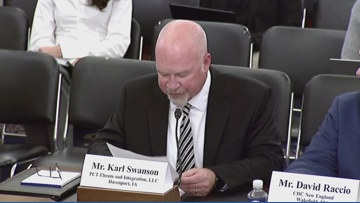Report on Michigan School Rankings and Alignment with Sustainable Development Goals
Introduction: Assessing Educational Excellence through the Lens of SDG 4
A recent analysis by Niche provides a comprehensive ranking of public and private high schools and school districts within the state of Michigan. This report re-examines these findings through the framework of the United Nations Sustainable Development Goals (SDGs), with a primary focus on SDG 4: Quality Education. The rankings serve as a valuable metric for assessing the progress of educational institutions in providing inclusive, equitable, and high-quality learning environments for all students.
Ranking Methodology and Correlation with SDG Targets
The criteria used to evaluate the schools directly correlate with several key targets within the Sustainable Development Goals, particularly SDG 4.
- Public School Evaluation: The metrics for public schools—including academics, quality of teachers, resources, and facilities—are fundamental to achieving SDG Target 4.1, which aims to ensure that all children complete free, equitable, and quality secondary education. The inclusion of “culture and diversity” as a criterion also supports SDG Target 4.7, which promotes education for sustainable development, global citizenship, and the appreciation of cultural diversity.
- Private School Evaluation: The focus on matriculation to top colleges and STEM education aligns with SDG Target 4.4, which seeks to substantially increase the number of youths and adults with relevant skills for employment and entrepreneurship.
- District-Level Evaluation: The assessment of entire school districts based on academics, teacher quality, and resources reflects the systemic approach needed to achieve SDG 4 and build strong, effective, and accountable institutions at all levels, as outlined in SDG 16.
Analysis of Top-Performing Public High Schools: A Benchmark for SDG 4.1
The following institutions are recognized for their exceptional performance in delivering quality secondary education, setting a standard for academic excellence and student support in the state. International Academy, ranked first in Michigan, is also noted as the 14th-best public high school in the United States, signifying a high level of achievement in providing effective learning outcomes.
- International Academy (Bloomfield Hills)
- Novi High School (Novi)
- Troy High School (Troy)
- Washtenaw International High School (Ypsilanti)
- Pioneer High School (Ann Arbor)
- Huron High School (Ann Arbor)
- Northville High School (Northville)
- Okemos High School (Okemos)
- Rochester Adams High School (Rochester Hills)
- Community High School (Ann Arbor)
Analysis of Top-Performing Private High Schools: Fostering Specialized Skills for SDG 4.4
Private institutions play a significant role in the educational landscape, often providing specialized programs that contribute to skill development. Cranbrook Schools, ranked first, is also recognized as the best high school for STEM in Michigan. This emphasis on science, technology, engineering, and mathematics is critical for equipping students with the technical and vocational skills necessary for future innovation and employment, directly supporting SDG Target 4.4.
- Cranbrook Schools (Bloomfield Hills)
- Greenhills School (Ann Arbor)
- Detroit Country Day School (Beverly Hills)
- Interlochen Arts Academy (Interlochen)
- The Roeper School (Bloomfield Hills)
- University Liggett School (Grosse Pointe Woods)
- Rudolf Steiner School of Ann Arbor (Ann Arbor)
- Michigan Islamic Academy (Ann Arbor)
- Frankel Jewish Academy of Metro Detroit (West Bloomfield)
- Academy of Sacred Heart (Bloomfield Hills)
Analysis of Top-Performing School Districts: Strengthening Institutions for Equitable Education (SDG 4 & SDG 16)
The performance of a school district is a key indicator of strong institutional capacity and governance, which is essential for delivering equitable and quality education on a broad scale. This aligns with SDG 16 (Peace, Justice and Strong Institutions) by demonstrating effective and inclusive local governance in the education sector. Novi Community School District, ranked first in the state and 21st nationally, exemplifies a system-wide commitment to the principles of quality education.
- Novi Community School District (Oakland County)
- Northville Public Schools (Wayne and Oakland counties)
- Troy School District (Oakland County)
- Oakland Schools (Oakland County)
- Bloomfield Hills Schools (Oakland County)
- Okemos Public Schools (Ingham County)
- Rochester Community School District (Oakland County)
- Van Buren Intermediate School District (Van Buren County)
- Birmingham Public Schools (Oakland County)
- New Buffalo Area Schools (Berrien County)
SDGs Addressed in the Article
SDG 4: Quality Education
- The entire article is centered on the quality of education, which is the primary focus of SDG 4. It evaluates and ranks high schools and school districts based on a variety of quality-related metrics. The article discusses the “best public and private high schools,” directly addressing the goal of ensuring inclusive and equitable quality education.
Identified SDG Targets
SDG 4: Quality Education
-
Target 4.1: By 2030, ensure that all girls and boys complete free, equitable and quality primary and secondary education leading to relevant and effective learning outcomes.
- The article directly addresses this target by focusing on the quality of secondary education (high schools) in Michigan. The ranking system evaluates schools on factors like “academics” and outcomes such as “top colleges students attend” and “college enrollment,” which are proxies for “relevant and effective learning outcomes.”
-
Target 4.4: By 2030, substantially increase the number of youth and adults who have relevant skills, including technical and vocational skills, for employment, decent jobs and entrepreneurship.
- This target is relevant through the specific mention of STEM education. The article highlights that Cranbrook Schools is ranked as the “best high school for STEM in Michigan.” STEM skills are critical technical skills for future employment and innovation, aligning with the objective of this target.
-
Target 4.a: Build and upgrade education facilities that are child, disability and gender sensitive and provide safe, non-violent, inclusive and effective learning environments for all.
- The article mentions that public schools and school districts were measured on “resources and facilities.” This criterion directly relates to the physical infrastructure and learning environment of the schools, which is the focus of Target 4.a.
Implied Indicators for Measuring Progress
SDG 4: Quality Education
-
Indicators for Target 4.1 (Quality Education and Outcomes):
- The article implies several indicators used by Niche to measure educational quality and outcomes. These include:
- Academic Performance: Public schools and districts were given grades based on “academics.”
- Higher Education Enrollment: Private schools were measured on “top colleges students attend” and “college enrollment.”
- Stakeholder Satisfaction: Both public and private schools were evaluated using “parent and student surveys on overall experience.”
- The article implies several indicators used by Niche to measure educational quality and outcomes. These include:
-
Indicator for Target 4.4 (Relevant Skills):
- An implied indicator is the existence of a ranking for specialized technical education. The article’s statement that a school is the “best high school for STEM” suggests a measurement of the quality and prominence of STEM programs.
-
Indicators for Target 4.a (Learning Environments):
- The article points to direct, though not officially defined, indicators for the quality of the learning environment:
- Quality of Infrastructure: The evaluation of “resources and facilities” for public schools and districts.
- Student Support: The measurement of “student-teacher ratio” for private schools is an indicator of a supportive learning environment.
- Inclusivity: The use of “culture and diversity” as a metric for both public and private schools points to an attempt to measure the inclusiveness of the learning environment.
- The article points to direct, though not officially defined, indicators for the quality of the learning environment:
Summary Table: SDGs, Targets, and Indicators
| SDGs | Targets | Indicators (as implied in the article) |
|---|---|---|
| SDG 4: Quality Education | Target 4.1: Ensure quality primary and secondary education leading to effective learning outcomes. |
|
| SDG 4: Quality Education | Target 4.4: Increase the number of youth with relevant skills, including technical skills. |
|
| SDG 4: Quality Education | Target 4.a: Build and upgrade education facilities to provide effective learning environments. |
|
Source: cbsnews.com







